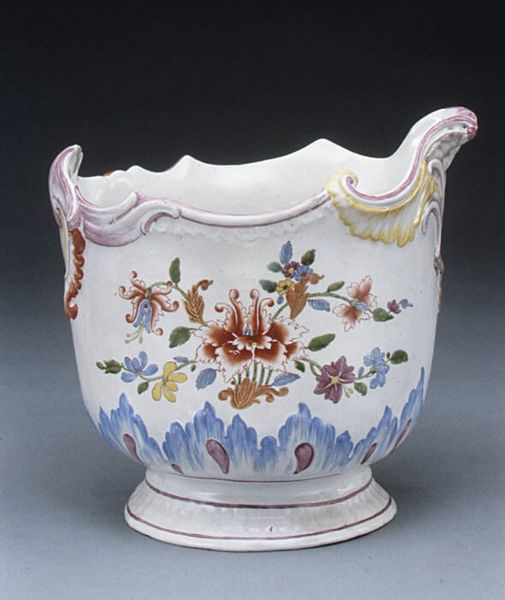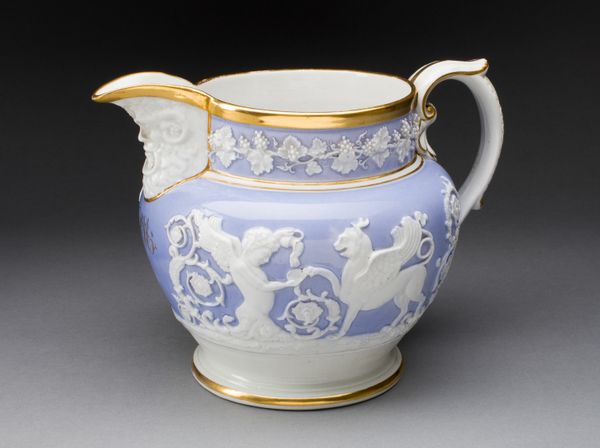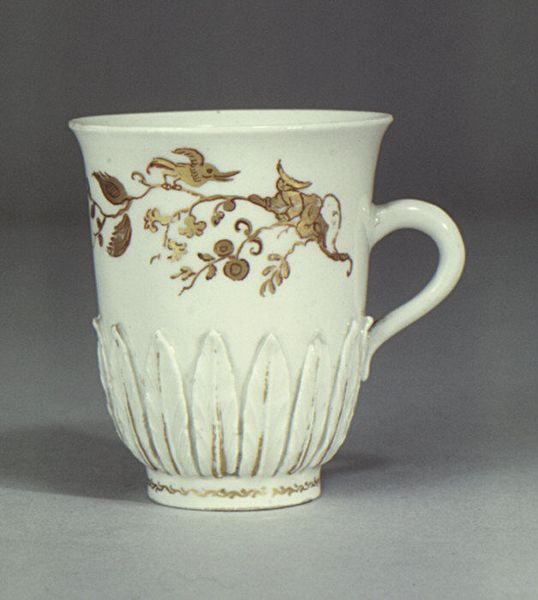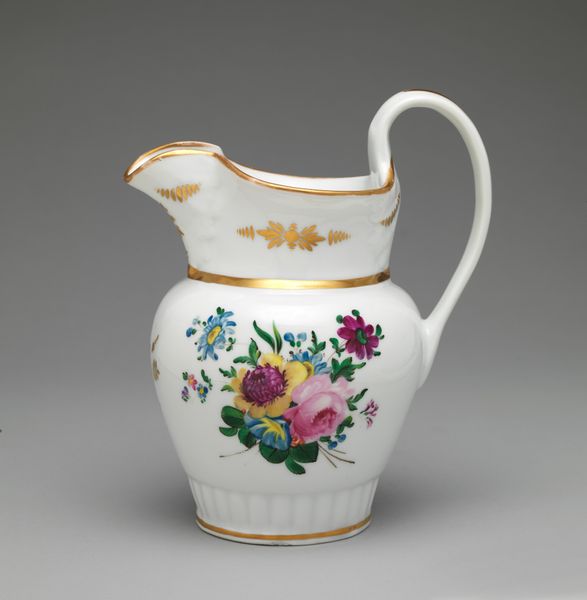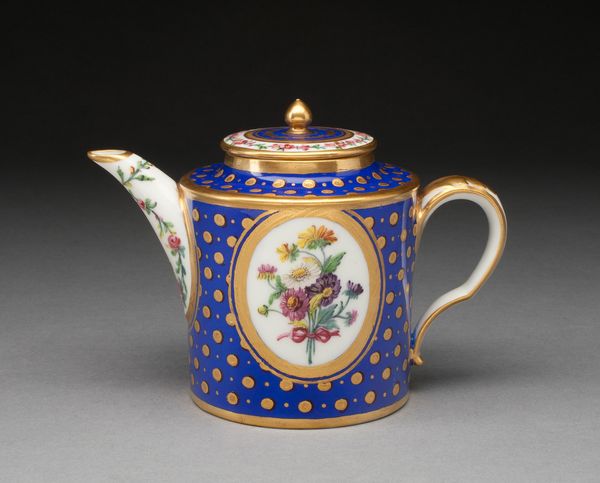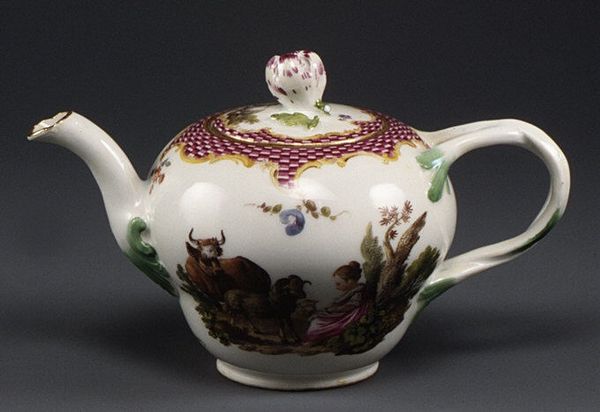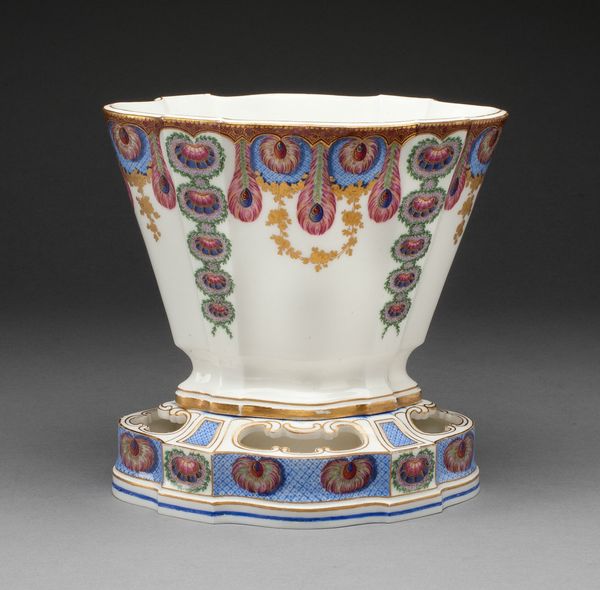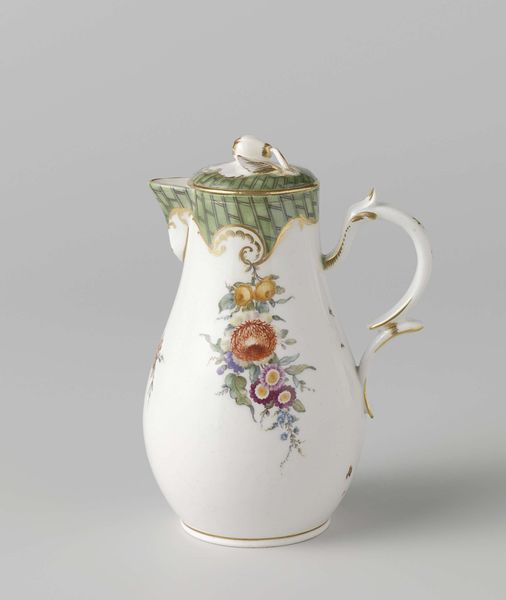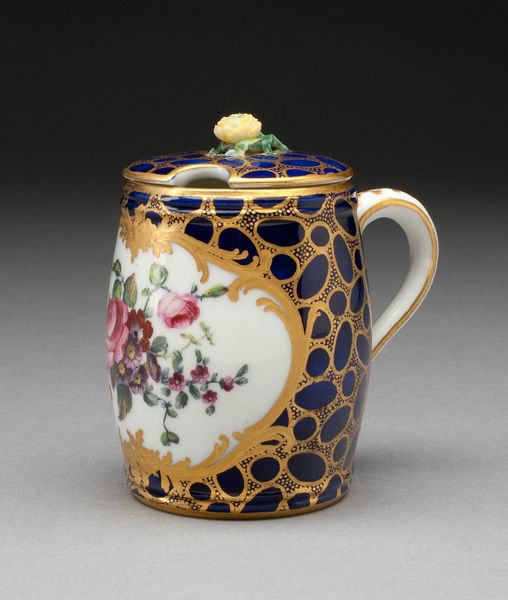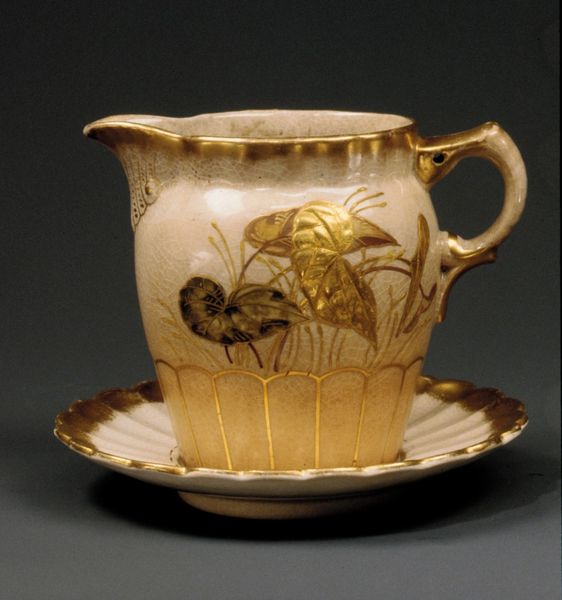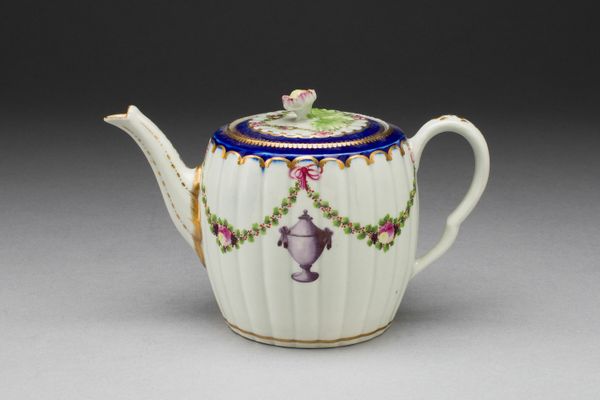
ceramic, porcelain, sculpture
#
ceramic
#
jewelry design
#
porcelain
#
sculpture
#
ceramic
#
decorative-art
#
rococo
Dimensions: Height: 3 in. (7.6 cm)
Copyright: Public Domain
Curator: We are looking at a porcelain cup dating back to 1725-1740, currently held in the Metropolitan Museum of Art's collection. Editor: Oh, it's quite delicate, isn’t it? The pastel colors are so soft. I’m getting a real "tea with grandma" vibe— in the best way possible! And those braided handles, they look more like decorative ropes. Curator: Exactly! It's a fascinating piece because it exemplifies the Rococo style's emphasis on ornate details and lightness of form. This was a time of aristocratic extravagance, where even everyday objects, such as drinking vessels, were elevated to high art. Porcelain production, especially, became a source of national pride and wealth across Europe. Editor: There's such a restrained flamboyance about it, you know? It is bougie, but subtly. The little basket of flowers painted on the side—it looks like it's about to burst forth with spring! There’s almost a sense of humor present…like it is quietly mocking itself somehow. Curator: Indeed! Porcelain was highly coveted, and this piece showcases the ceramic artistry sought by wealthy patrons. The cup’s form and decoration were intended not merely for functional use but to reflect the owner’s refinement and status in society. Editor: I suppose, to some extent, this piece exists as a tiny, potent symbol of consumer culture. Sort of an ancestral iPhone or designer handbag? And that color palette, that decorative, almost obsessive ornamentation…It’s clear that so much energy went into making it—probably way more than it warranted! Which is just wonderfully, humanly absurd, isn't it? Curator: Absolutely. And if we analyze the context further, this cup, while seemingly frivolous, can provide key insight into the artistic tastes, economic forces, and even social rituals of 18th-century Europe. Its display and use became social performances, reinforcing class distinctions and cultural values. Editor: Well, next time I sip tea, I’ll try to imagine the drama stirred in those tiny cups centuries ago. Thanks for providing this backdrop. Curator: My pleasure. And thanks for the added layer of human touch.
Comments
No comments
Be the first to comment and join the conversation on the ultimate creative platform.

